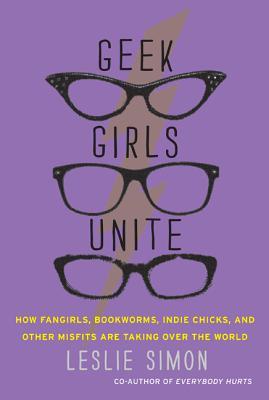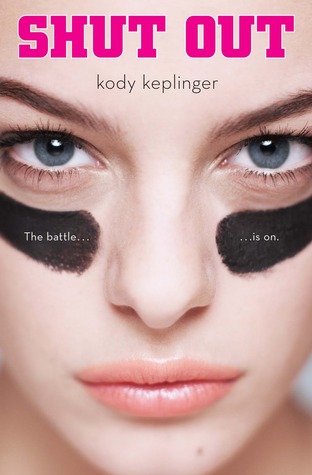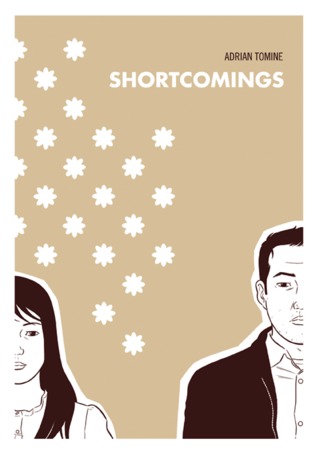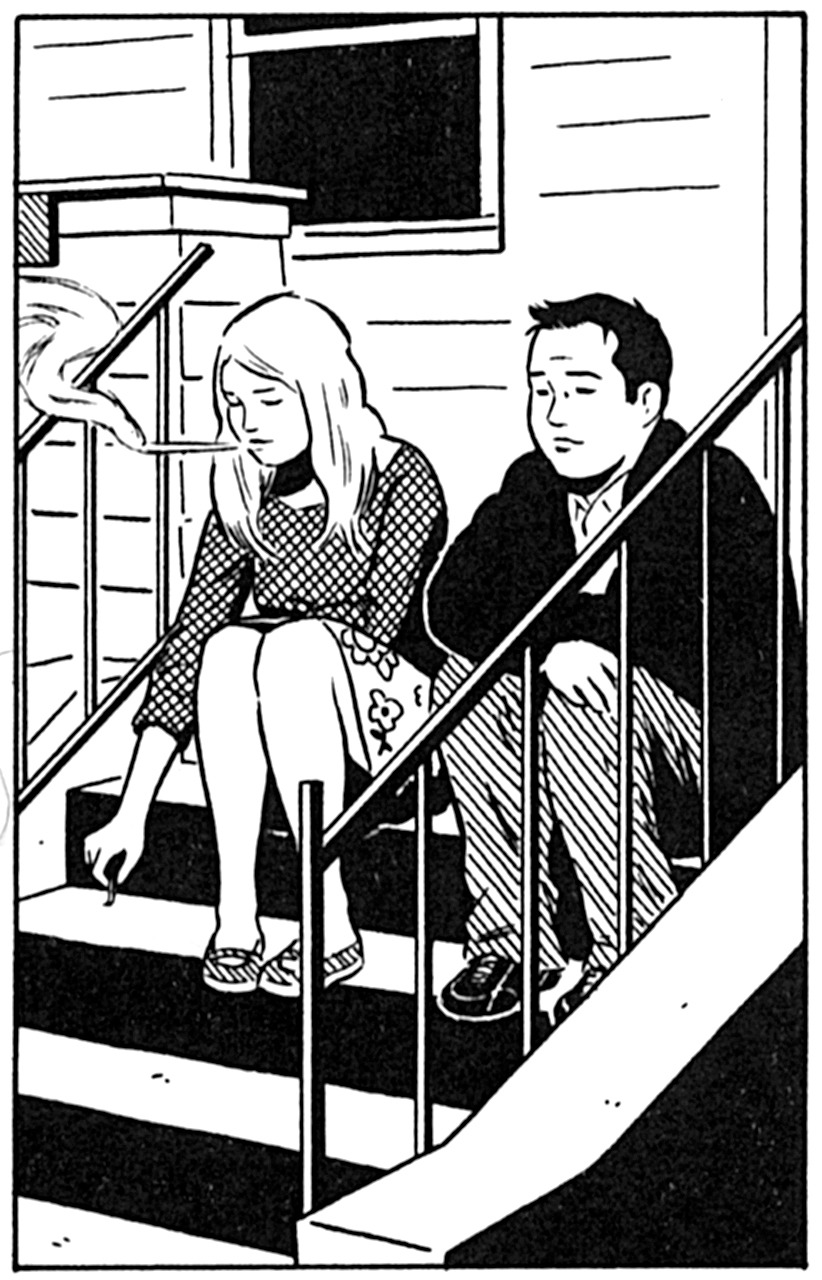 Description:
Description: In recent years, male geeks have taken the world by storm. But what about their female counterparts? After all, fangirls are just like fanboys—they put on their Imperial Stormtrooper Lycra pants one leg at a time.
Geek Girls Unite is a call to arms for every girl who has ever obsessed over music, comics, film, comedy, books, crafts, fashion, or anything else under the Death Star. Music geek girl Leslie Simon offers an overview of the geek elite by covering groundbreaking women, hall-of-famers, ultimate love matches, and potential frenemies, along with her top picks for playlists, books, movies, and websites. This smart and hilarious tour through girl geekdom is a must-have for any woman who has ever wondered where her sassy rebel sisters have been hiding.
Stats: Non-fiction, 208 pages, First Published by It Books, October 2011.
My Rating: 1 STAR
This did not go well. It certainly could have gone much worse, but it gets worse the more I think about it. Mildly offensive at best.
I'm sure Ms. Simon meant no harm. I'm sure she wasn't trying to insult me. But someone along the writing path needed to remind her of the sensitivity of her subject. How saying my jeans are
"probably second hand or from Target" might be seen as an insult or how her humorous quips might be read more as jabs. How not all girls are the same and one geek is not like the others. We're not all unpopular, we're not all meek, we're not one thing. We don't all want beta boys because some of us don't even want boys to begin with. These obvious flaws could have been rectified by
acknowledging the differences.
Part of what makes a geek a geek is that we don't fit a mold, we don't all have the same spots and stripes. Just because we like stuff doesn't mean it completely defines every aspect of who we are. This book makes some pretty bold assumptions and Simon backs them up by saying that she has created a community of geek girls called the "Geek Girl Guild" who she has interacted with.
"Women of all ages, backgrounds, and areas of geek expertise wanted to joined the sisterhood, making the first pledge class over one hundred strong!" - Introduction, page 5
(And yes, "joined" is a spelling mistake found in the book.)
It makes me wonder how many of those 100 women read this book after it was published and went ...Hold on a second. I will say that the most interesting part of the book for me was the quotes in the margins, some of which attributed to the non-famous, which I assume were taken from this group of women. These geek girls were happy, strong, and proud. Another positive were the small biographical paragraphs about various geek girls who have succeeded in there in field, change perceptions, or influenced geek culture. Those small elements were great to read and brought a smile to my face midst the frowning.
With that said however, lets talk about the frowning, and the scoffing, and the sighing, and the raging.
I went into this book going off the title alone. I thought that anything geek girl oriented might be interesting to check out. I was wrong. I could only force myself to read so much and in the end, to be completely upfront, I only read the sections of this book that applied to me and as I identify myself as a geek. I couldn't force myself to read anymore.
I read:
Introduction
Section 1: Fangirl Geek
Section 2: Literary Geek
Section 7: Miscellaneous Geek (because being called "Miscellaneous" is a confidence boost)
Conclusion: Geek Girls Unite
The other chapters are more in the same and I assure you were skimmed through diligently for the sake of this review. These are the sections that I will be going focusing on in depth.
Brace yourselves.
We are gathered here as the Geek Girls of the world. Those of us focused on in this book are labeled by interest: Fangirl Geek, Literary Geek, Film Geek, Music Geek, Funny-Girl Geek, Domestic Goddess Geek, and Miscellaneous Geeks, which are Tech Geeks, Fashionista Geeks, Political Geek, Retro Geek, and Athletic Geek.
The majority of this book, 99.9%, is about generalizing, quantifying, labeling, judging, assuming, and stereotyping who we are as people based off of a single interest. Now, this narrow-minded focus is bound to be exclusionary but things only get monumentally worse when Ms. Simon tries to apply humour to the situation. Her quips can easily be read as jabs, her silly throwaway pages easily read as insulting. At every turn there is another opportunity to judge and generalize, of course humourously. My glasses, my phone, everything is just another opportunity for a joke. To take one thing and boil it down to what that says about who I am.
Then there's is the FRENEMIES page near end of each and every section. Allow me to explain. Frenemies is a combination between "friend" and "enemy", or "frenemies". These pages are basically a list of people who you shouldn't like, or at least not hang out with, based on your geek cred. Because we're in middle school and these people are clearly not cool enough to be seen with.
Oh, you want some examples? Why, sure! Here some taken word-for-word from every section.
- Athletes.
- House guests who see your Sony PlayStation and ask if you live with a ten-year old.
- Anyone who cheated their way through high school and college English literature classes by relying solely on CliffsNotes.
- Members of the illiterati.
- Simpletons who are only familiar with the term "word-play" because it's the name of a Jason Mraz Song.
- Cheeseballs who still quote Napoleon Dynamite, Borat, or Austin Powers on a regular basis.
- Poseurs who admit to being "really into film" after seeing one Wes Anderson movie.
- Investment bankers, stock brokers, and various other Wall street douche bags.
- Girls who wear leggings instead of pants.
- Women who wear fragrances by celebrities.
- Know-it-alls who immediately launch into a "but is it art?" discussion after walking through a contemporary art exhibit.
- Eccentrics who wear holiday or Cosby sweaters unironically.
- Self-proclaimed artists who use paint-by-number kits.
My word! These people are clearly soooooo beneath us. Let us banish them from our cool table and make them sit with losers at lunch! Suddenly geek girls are exclusionary, mean, would rather judge then share our knowledge, rather jump to conclusions then laugh, and willing to completely shun a person based on a single trait.
This pisses me off! People like what they like! Why is it necessary to be mean to each other? Geek girls know better than anyone that people who don't accept others for who they are aren't worth being around. And the fact that Ms. Simon is encouraging this sort of behavior make me beyond angry.
Let us not forget the previously mentioned Geek Love Checklist section, which tells us traits to look for in the perfect geeky man for each section's assumed tastes. These pages manage to squeak by from my acceptance that I'm reading the same quality that can be found in your average $1.99 teen magazine. Till of course I saw this:
The Perfect Match For a Literary Geek Girl...
"Only reads one book at a time and thinks someone who's 'in the middle' of numerous titles displays commitment issues."
Which made me think this: Screw. You. Asshole.
... Remember how I told you that geek girls can be sensitive? The majority of us grow up being told what is normal, what is cool, what makes a girl desirable. If a guy said that to me, I'd get up and leave. Because I am a geek girl and I don't like elitism.
Then there was a bunch on small things that bugged me, which I will briefly list for your sake.
- The mislabeling of Harry Potter fanatics as "Muggles".
- The 18 Twilight references in the Fangirl section. (I loved Twilight when I was young, but this was a little much)
- The section dedicated to Twilight called "The Twilight Zone", which never even mentions the actual Twilight Zone. You know, the cult classic.
- Reading through the entire Fangirl section and not a single mention of "fandom", online communities, or Firefly.
- Reading through the Literary Geek section and not a single mention of "Young Adult", varying tastes, or a little word called "genre".
- The page title, "TAP THAT SASS". No thank you.
- The fact that the book lacks focus in the audience it is trying to appeal to.
- The way that the Literary Geek section list books/information about only adult fiction and some early juvenile fiction. I found this annoying because these were not the books that geek girls love universally. These books are books everyone should read eventually, but you have to hold an interest for them and they have to be at your reading level. When going through all the adult fiction it was like reading a list of books for a college course.
- And the section on the Political Geek Girl has this lovely little snippet:
"They strive to be advocates and activists; thus they often possess a pretty rigid set of values and ethics. (Some might call them stubborn or obstinate. Not me, of course, but some.) In an ideal world, everyone would see things their way." - page 172.
I'm just going to stop there.
I am a fangirl of epic giggly and badass proportions, fashion is my passion, music and film are my mistresses, and global politics is my dirty Sunday gal. But most importantly I am a literary geek who should warn all other such geeks to keep this book off their to-read lists. Not only is it not worth our time and money, but it is not worth the possible insult. As a girl, I refuse to be generalized. I am proud of who I am and that girl is not the geek that Ms. Simon thinks I should be.
 Before I can even talk about the story, let us talk about the art. It captures the tone and severity of the characters so perfectly that if it was a single shade darker or lighter it wouldn't have worked at all. There's so much action in a story like this one, it's full to the brim with quick scenes that take pages of expertly planned movements to pull off and yet where so many artists go wrong The Losers never missed a beat. I followed along with each character as they moved through the page, dodging bullets, and running fast to try and pull off the impossible. If not for the art this story would not have worked as well as it did. Also, if not for the vivid colouring it wouldn't look so pretty! There are so many pages that I want to hang on my wall and just look at them all the time.
Before I can even talk about the story, let us talk about the art. It captures the tone and severity of the characters so perfectly that if it was a single shade darker or lighter it wouldn't have worked at all. There's so much action in a story like this one, it's full to the brim with quick scenes that take pages of expertly planned movements to pull off and yet where so many artists go wrong The Losers never missed a beat. I followed along with each character as they moved through the page, dodging bullets, and running fast to try and pull off the impossible. If not for the art this story would not have worked as well as it did. Also, if not for the vivid colouring it wouldn't look so pretty! There are so many pages that I want to hang on my wall and just look at them all the time. The Losers was just amazing all around. The dialogue is fantastic and you can tell that this is a very well thought-out story. Although the characters didn't get a lot of time to get fleshed out with all the action going on you know who they are and what they do within seconds of meeting them. They all have the same mission, but each has their own motivations and that made them interesting. I rooted for them before I even knew what I was rooting for!
The Losers was just amazing all around. The dialogue is fantastic and you can tell that this is a very well thought-out story. Although the characters didn't get a lot of time to get fleshed out with all the action going on you know who they are and what they do within seconds of meeting them. They all have the same mission, but each has their own motivations and that made them interesting. I rooted for them before I even knew what I was rooting for! Then there's the plot that brings this bad boy together. When our team gets murdered by one of there own the good don't ever stay dead for long. Now their mission is to get back what's been taken from them.
Then there's the plot that brings this bad boy together. When our team gets murdered by one of there own the good don't ever stay dead for long. Now their mission is to get back what's been taken from them.










